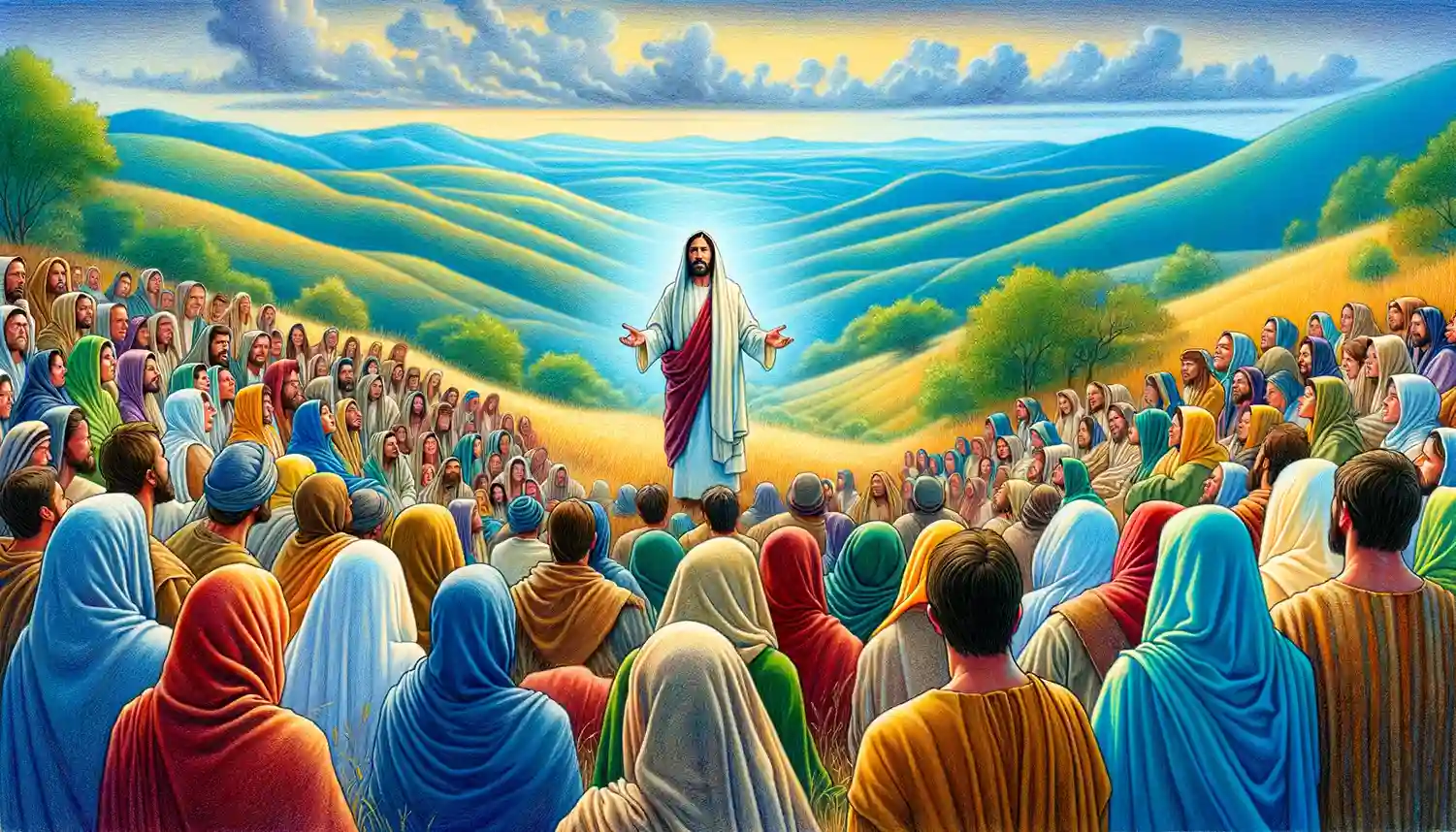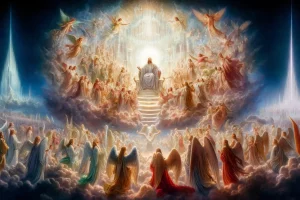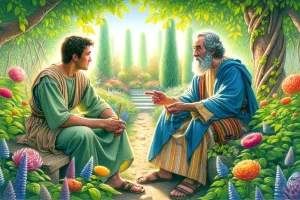
The Book of Matthew
The Book of Matthew is the first Gospel in the New Testament and provides a detailed account of the life, ministry, death, and resurrection of Jesus Christ. Here are some key facts about the Book of Matthew:
- Authorship: Traditionally attributed to Matthew, one of the twelve apostles and a former tax collector. The authorship remains a subject of scholarly debate, but the text is commonly linked to Matthew due to its detailed inclusion of tax-related parables and its emphasis on Jesus’ teachings.
- Date of Writing: The Gospel of Matthew is generally dated to around 80-90 AD, though some scholars suggest earlier dates. It appears to have been written after the destruction of the Temple in Jerusalem in 70 AD, given its references to that event.
- Audience: Matthew’s Gospel is thought to have been written for a predominantly Jewish-Christian audience, evidenced by its frequent references to the Hebrew Scriptures and its emphasis on Jesus as the fulfillment of Old Testament prophecies.
- Key Themes:
- Jesus as the Messiah: Matthew portrays Jesus as the promised Messiah, the fulfillment of Old Testament prophecies.
- Kingdom of Heaven: A major theme is the Kingdom of Heaven, which Jesus describes through parables and teachings.
- Discipleship: The demands and rewards of discipleship are a central focus, emphasizing a life in accordance with Jesus’ teachings.
- Jewish Law and the New Covenant: Matthew discusses the relationship between Jewish law and the teachings of Jesus, presenting Jesus as the one who fulfills and reinterprets the law.
- Structure: The book can be divided into the birth and early life of Jesus, His baptism and early ministry, the Sermon on the Mount, His parables and miracles, His confrontation with religious leaders, the Passion narrative, and His resurrection.
- Key Passages:
- Sermon on the Mount (Chapters 5-7): Contains core teachings of Jesus, including the Beatitudes and the Lord’s Prayer.
- Matthew 28:19-20 (The Great Commission): Jesus’ instructions to His disciples to make disciples of all nations, baptizing them and teaching them to observe all that He has commanded.
- Literary Features: Matthew includes five major discourses of Jesus, numerous fulfillment citations (connecting Jesus’ life and ministry with Old Testament prophecies), and a genealogy that traces Jesus’ lineage to Abraham, highlighting His Jewish heritage.
The Gospel of Matthew, as the first book of the New Testament, offers a comprehensive account of the life, teachings, death, and resurrection of Jesus Christ. It is particularly noted for its emphasis on Jesus as the fulfillment of Old Testament prophecies, establishing Him as the Messiah and authoritative teacher. Here’s a detailed analysis of the Gospel of Matthew, exploring its structure, themes, and theological implications.
1. Historical Context
Written around 80-90 AD, possibly in Antioch or another urban center with a significant Jewish-Christian population, Matthew addresses a community grappling with its identity in relation to Judaism and the broader pagan society. The Gospel reflects a time when followers of Jesus were defining themselves against the Jewish establishment and Gentile paganism.
2. Structure
The Gospel of Matthew is meticulously organized, more so than the other Gospels. It can be broadly outlined as follows:
- Introduction (Chapters 1-2): Includes Jesus’ genealogy, birth, and early life.
- Narrative and Discourses:
- The Proclamation of the Kingdom (Chapters 3-4)
- The Sermon on the Mount (Chapters 5-7)
- Missionary Discourse (Chapter 10)
- Parabolic Discourse (Chapter 13)
- Discourse on the Church (Chapter 18)
- Olivet Discourse (Chapters 24-25)
- Passion and Resurrection (Chapters 26-28): Details the arrest, trial, crucifixion, burial, and resurrection of Jesus.
3. Major Themes
- Fulfillment of Prophecy: Matthew frequently cites the Old Testament to show that Jesus fulfills the messianic prophecies, positioning Him as the continuation and culmination of the Jewish faith.
- Jesus as Teacher and Messiah: Jesus is portrayed with authority, symbolized by the frequent refrain, “You have heard that it was said… but I say to you…” This formula highlights Jesus’ role as an interpreter of the Law, not merely transmitting it but fulfilling and transforming it.
- Kingdom of Heaven: Central to Jesus’ teaching in Matthew is the concept of the Kingdom of Heaven, which He describes through various parables, emphasizing both its present reality and future completion.
- Discipleship: Emphasizing the cost and demands of discipleship, Matthew presents a vision of Christian life that requires total commitment to Jesus’ teachings.
4. Literary Features
Matthew employs a variety of literary forms, including genealogy, narrative, discourse, parable, and apocalypse, woven together to provide both a biographical account of Jesus and a theological argument about His significance. The five discourses are particularly notable, structuring the teaching material into cohesive units that echo the Pentateuch, suggesting a new Torah.
5. Theological Significance
Matthew’s Gospel is rich in its theological portrayal of Jesus as the new Moses, the definitive teacher of God’s ways. His teachings on the law, the beatitudes, and ethical living offer a comprehensive guide for the community’s conduct. The Great Commission at the end of the Gospel (Matthew 28:19-20) expands the mission to all nations, emphasizing the universal scope of Jesus’ message.
6. Contemporary Relevance
Today, Matthew’s emphasis on ethics, community, and the universal call of the Gospel resonates deeply in a global and often divided world. His insights into the nature of Christian leadership, community, and responsibility continue to inform and challenge modern believers.
In conclusion, the Gospel of Matthew serves as a bridge between Jewish traditions and the Christian message, offering a deep, structured, and richly theological portrayal of Jesus Christ’s life and mission. It challenges believers to live out the teachings of Jesus in anticipation of the coming Kingdom, advocating a radical lifestyle of righteousness and discipleship.
Tag:Apostles, Ascension, Authority, Authority of Christ, Authority of Scripture, Baptism, Christian Doctrine., Christian Living, Christianity, Christology, Compassion, crucifixion, Discipleship, Emmanuel, end times, eschatology, Eternal Damnation, Eternal Life, Faith, forgiveness, Fulfillment, Gospel, grace, Great Commission, Heaven, Hell, Immanuel, Jesus Christ, Jewish Messiah, John the Baptist, Judas Iscariot, judgment, King of Kings, Kingdom of Heaven, Law and Grace, Lord of Lords, Love, mercy, Messiah, Miracles, New Testament, Old Testament Fulfillment, Parables, Peter, Pharisees, prophecy, Rabbi, Redemption, repentance, resurrection, Sadducees, salvation, Salvation by Grace through Faith, Savior, Second Coming, Sermon on the Mount, Son of God, Teacher, Temptation, Transfiguration



